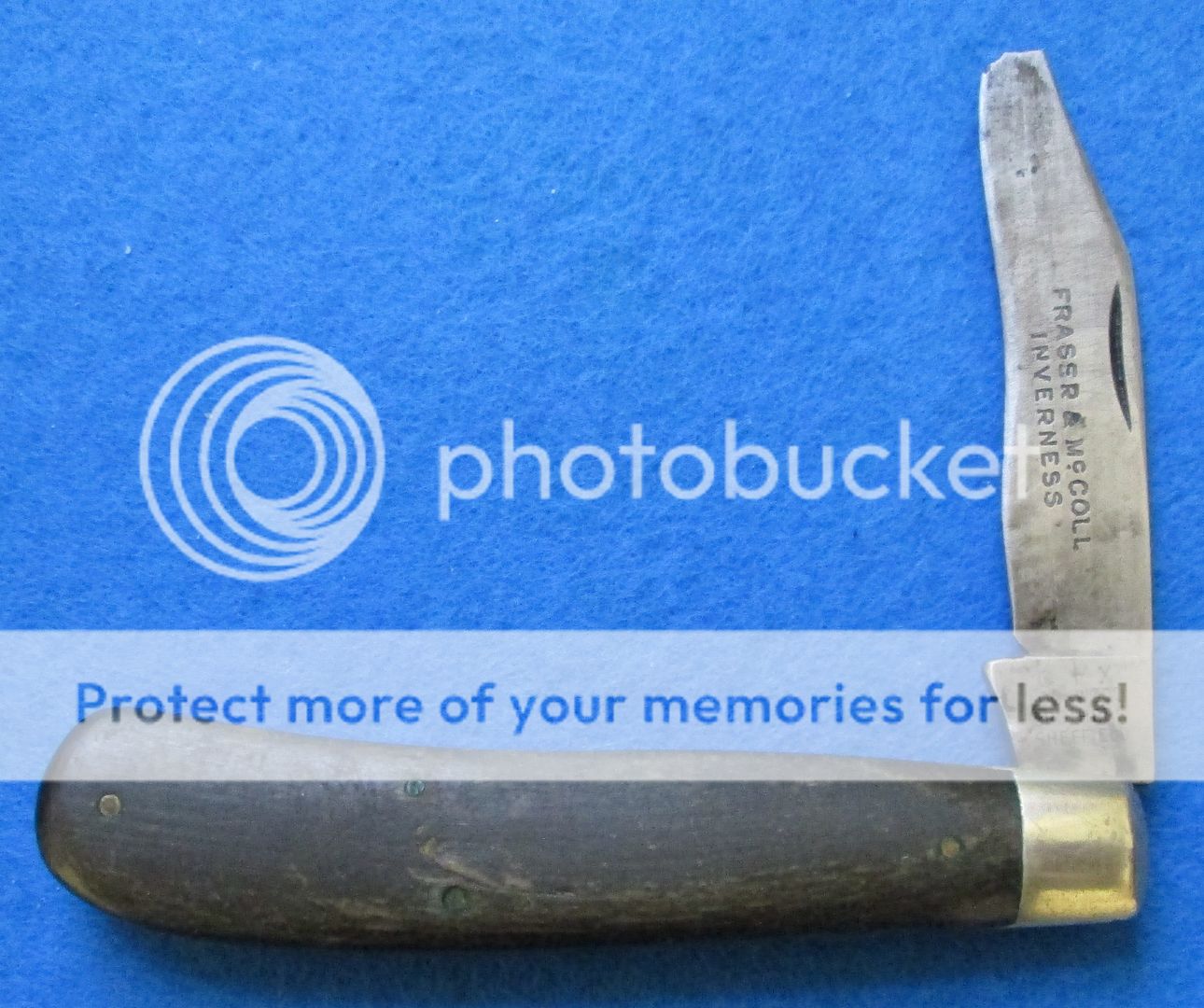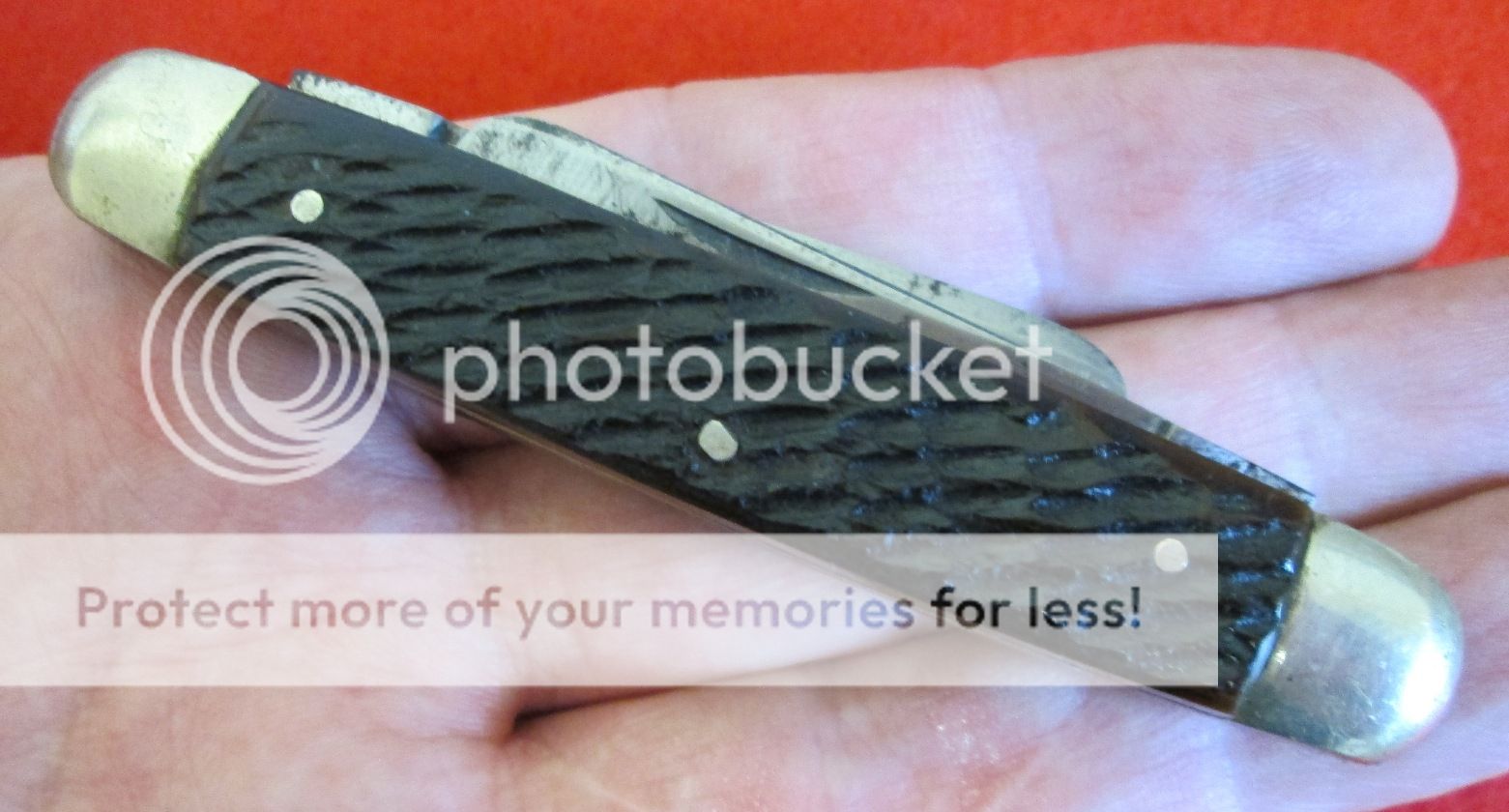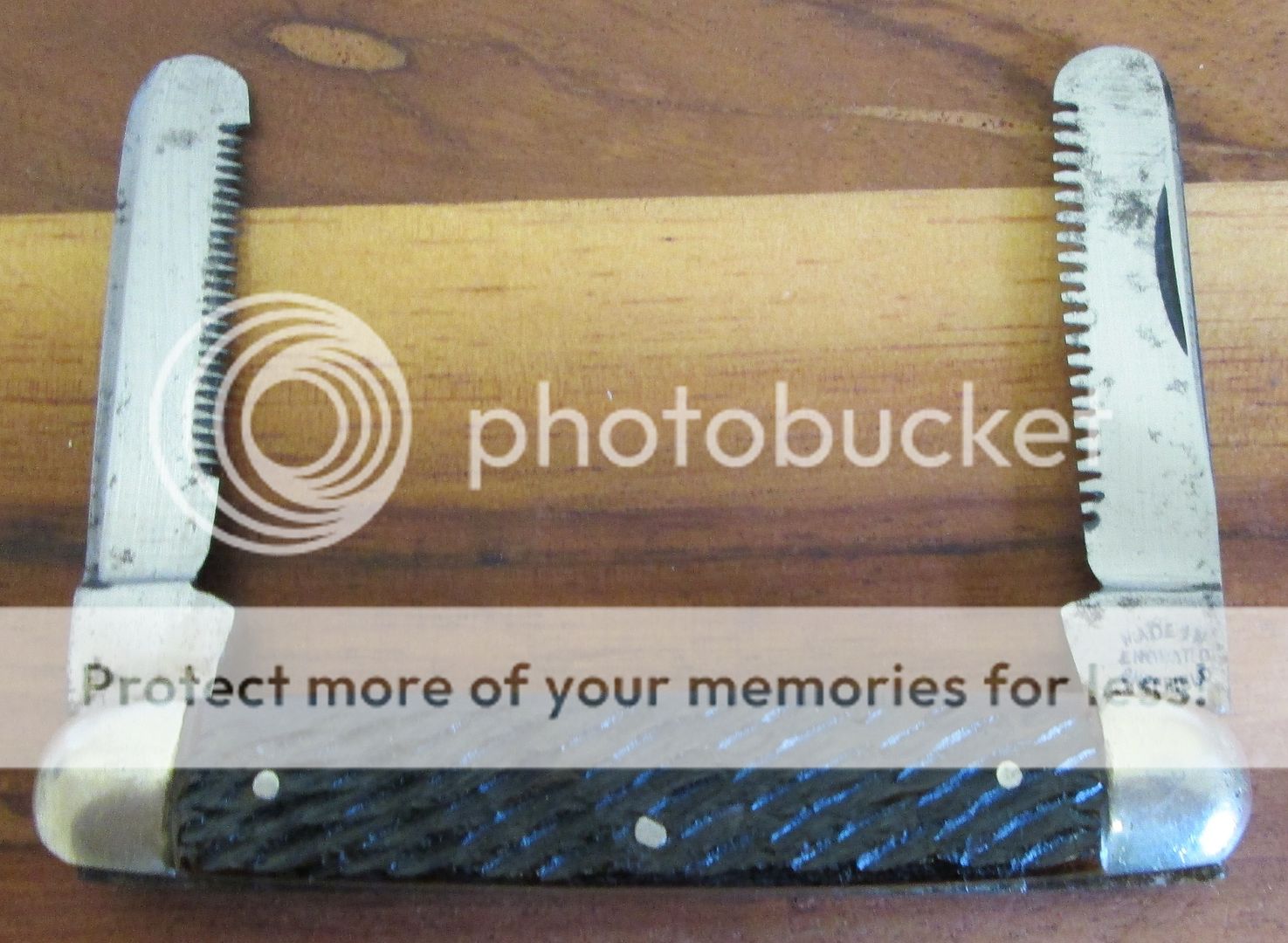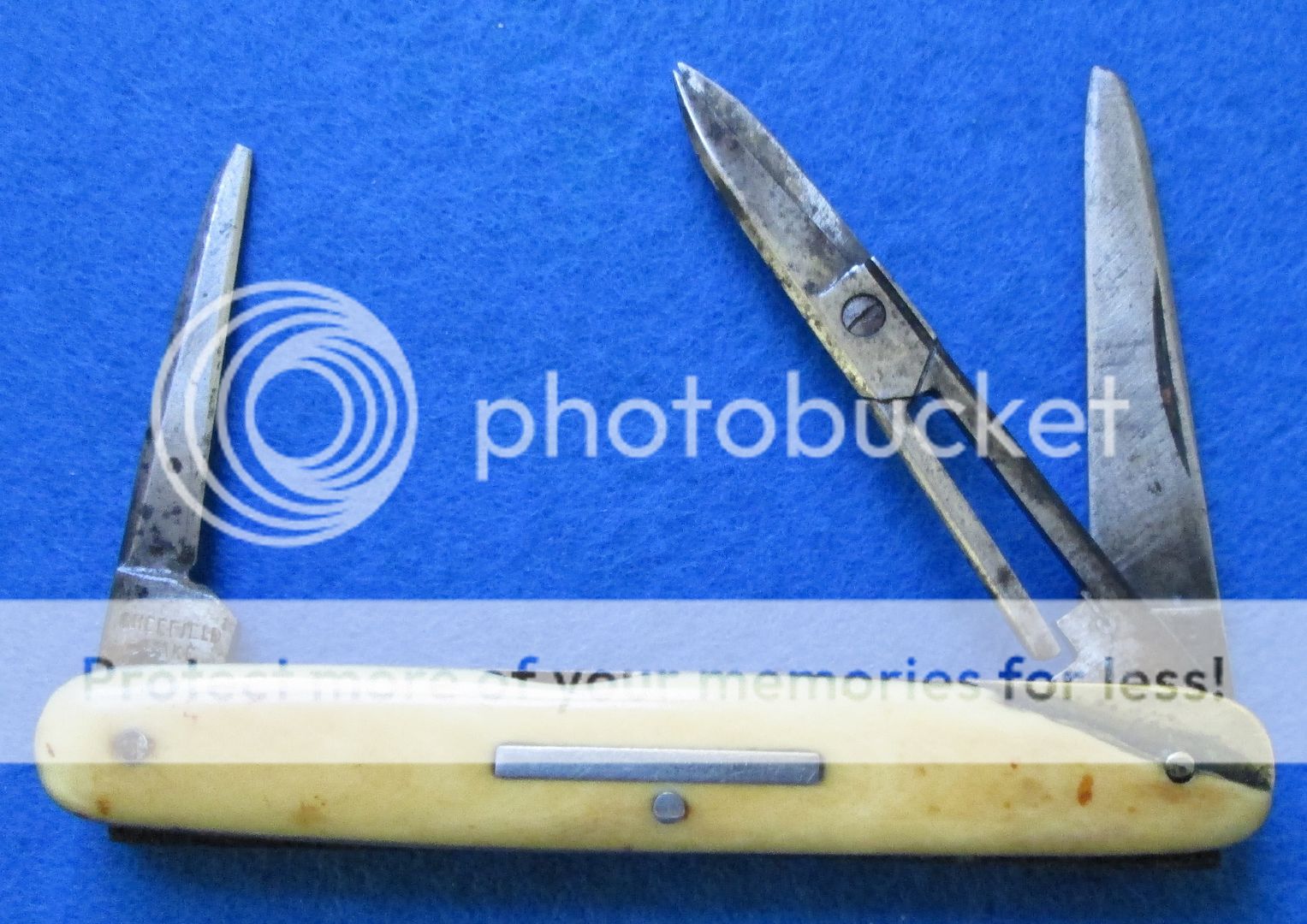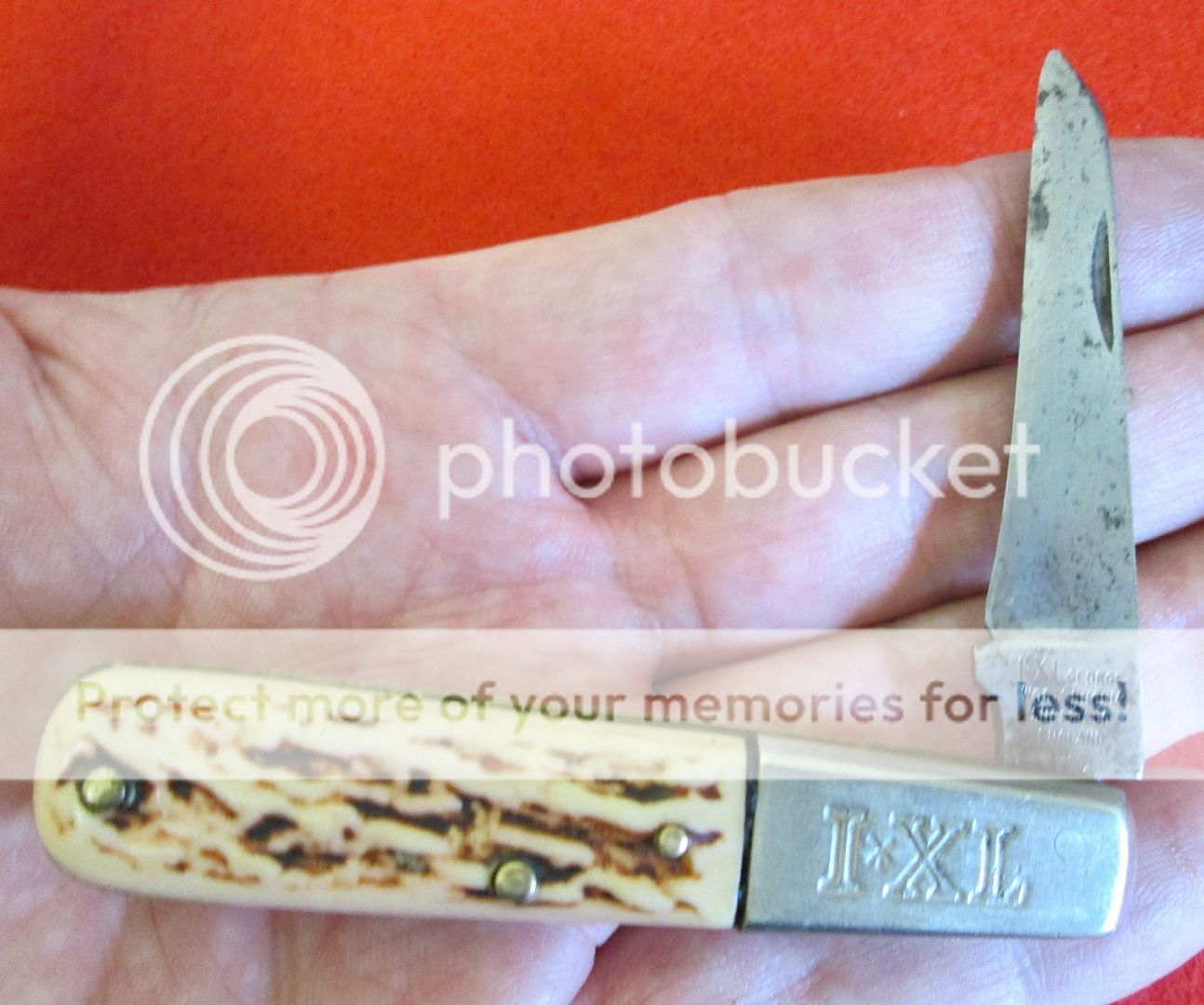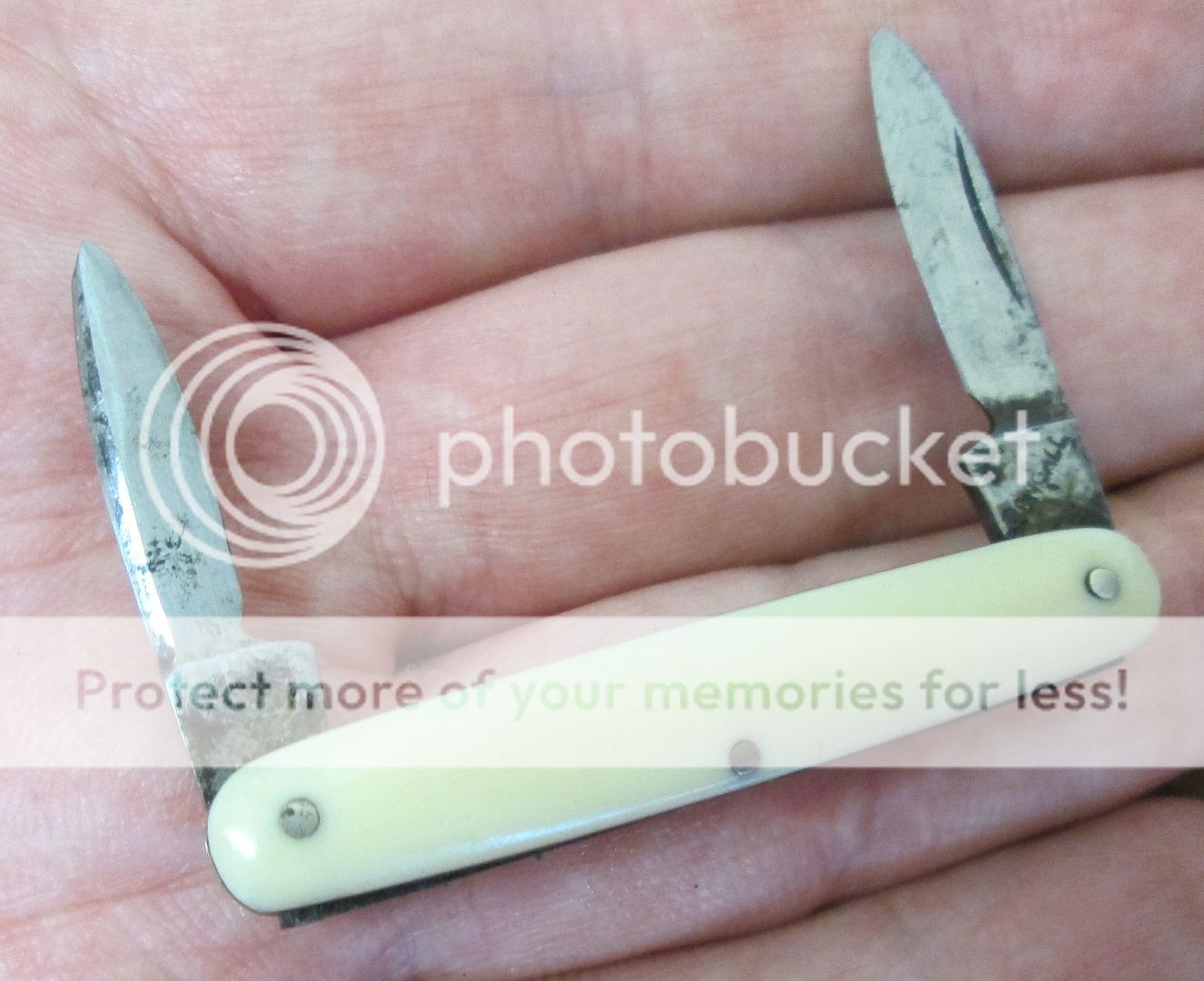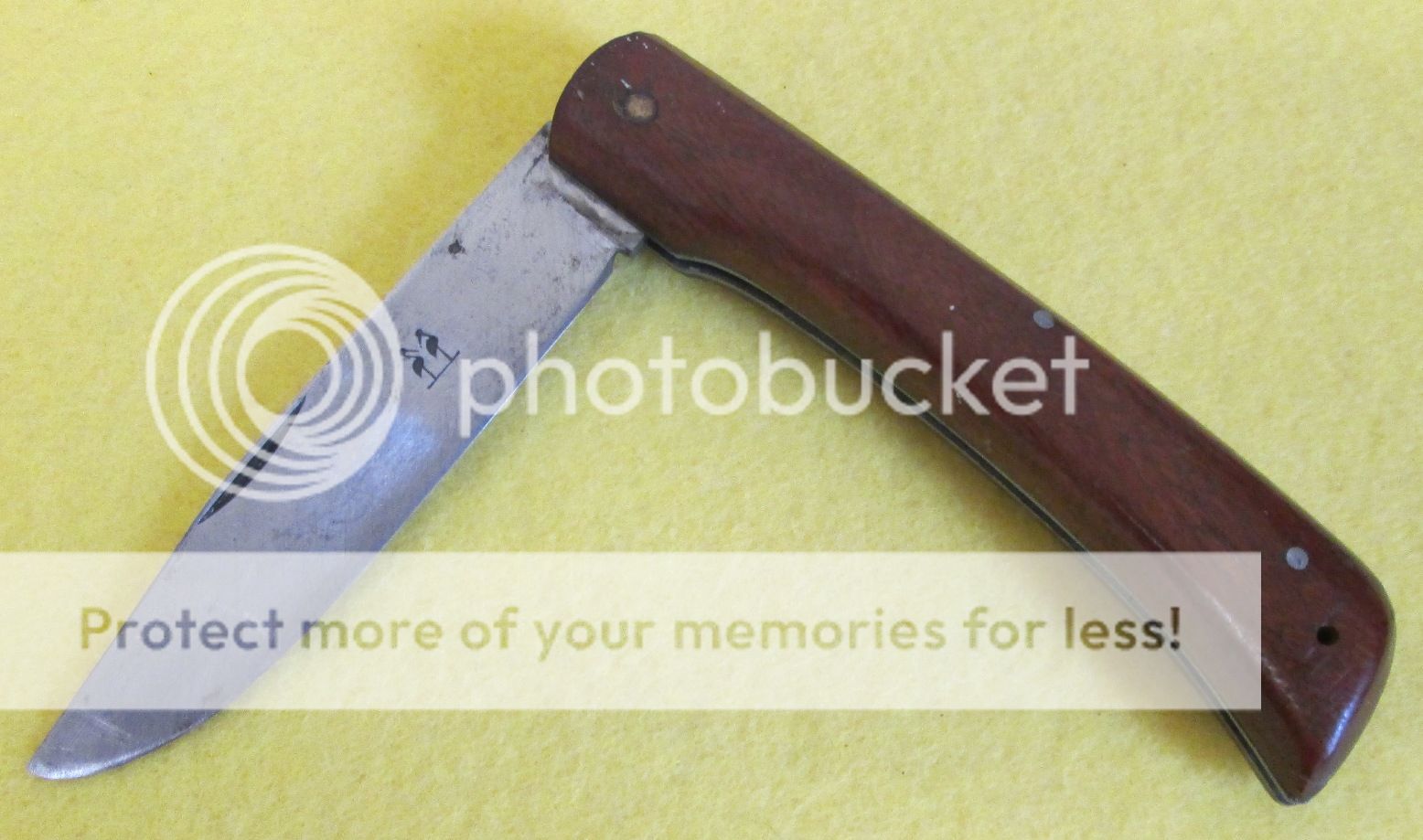- Joined
- Dec 2, 2005
- Messages
- 71,121
As you may recall from my last Table thread, Ive been forced to create a virtual table in the form of a shoe-box, into which Ive been tossing knives, and other bits and pieces, as and when I picked them up. Despite the fact that Ive not really done much hunting recently, barely any at all in fact, I still seem to have managed to accumulate a fair bit in the shoe-box, along with a few other things which wouldnt actually fit in the box. So, when it came time to open the box, this is what got tipped onto my kitchen table! 

Ill get these two canes out of the way first. I picked them up last week. Both have engraved hallmarked silver collars and horn handles. The collar on the ebony-shafted one reads, B.S.C. - Won By - J.HIGSON -June 19th 1895. Im not sure what sort of wood has been used for the other cane, but the finish is beautiful, almost like jigged bone. The collar on this one has been engraved with a pair of initials, and the silver hallmarks date it to 1847. Something for me to wave at young whipper-snappers!






For the background to the photos above, and some of those following, Ive used some WW2 British newspapers I bought. They have some interesting headlines and content from another time.

I picked up these three knives at this years Jorvik (York) Viking Festival. The one on the left is made by a young Polish maker.

I dont have a lot of practical use for them, but I can never resist a big Sheepsfoot like this example by George Butler. Its 4 ½ not including the shackle.

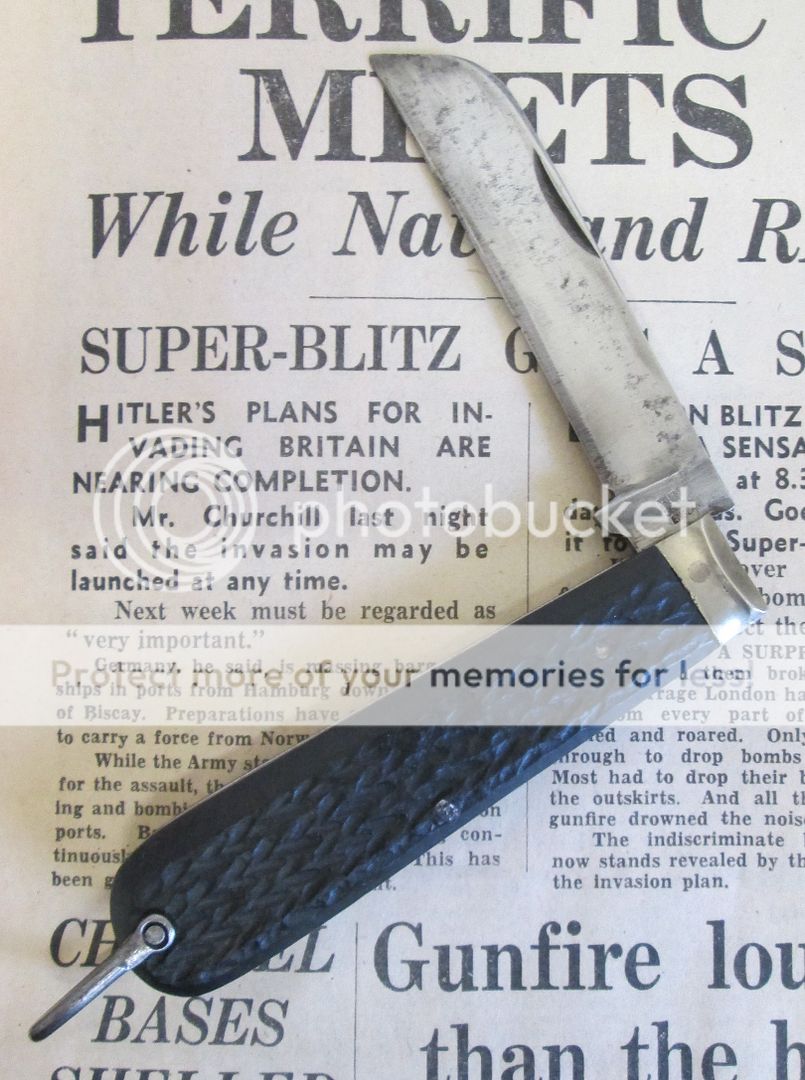
Anyone who has ever worked on a construction site has probably seen something like this Sheffield-made Hacking Knife. I dont usually buy them, but thought Id get one to show here. Theyre used for everything from stripping cable and opening bags of cement to batoning pipes and bricks. They are more like a chisel than a knife, crude and ugly, but extremely robust. This one is typical of the British ones Ive seen (I saw a US one just yesterday, and it wasnt too different), ¼ thick, with leather slabs crudely fixed on for handles. Theyre a bit loose, so had been wrapped in duct tape, which is quite common.



In the days before most folks owned cameras, they bought their holiday snaps. These sets are from the 1920s.


There was a time in the early 20th century when the Boy Scout movement absolutely exploded, and nearly every boy there was wanted to be one. Of course, they all needed knives, and the Sheffield cutlers bent their backs to make them. There was no official pattern, but hundreds of thousands of Boy Scout Knives were produced. The earliest were sheath knives, but heres a folding knife, very similar in pattern to British Army Clasp Knives, with a Boy Scouts blade etch. As youd imagine, its had a hard life, and both the Sheepsfoot blade and marlin spike have play due to spring wear. Scratted buffalo horn handles, the scratting possibly done by the owner I would think. Strangely, it has no bail. I have no idea what the tang stamps says! Ive included a photo of the knife sandwiched between a British Army WW1 pattern clasp knife, and one from WW2.


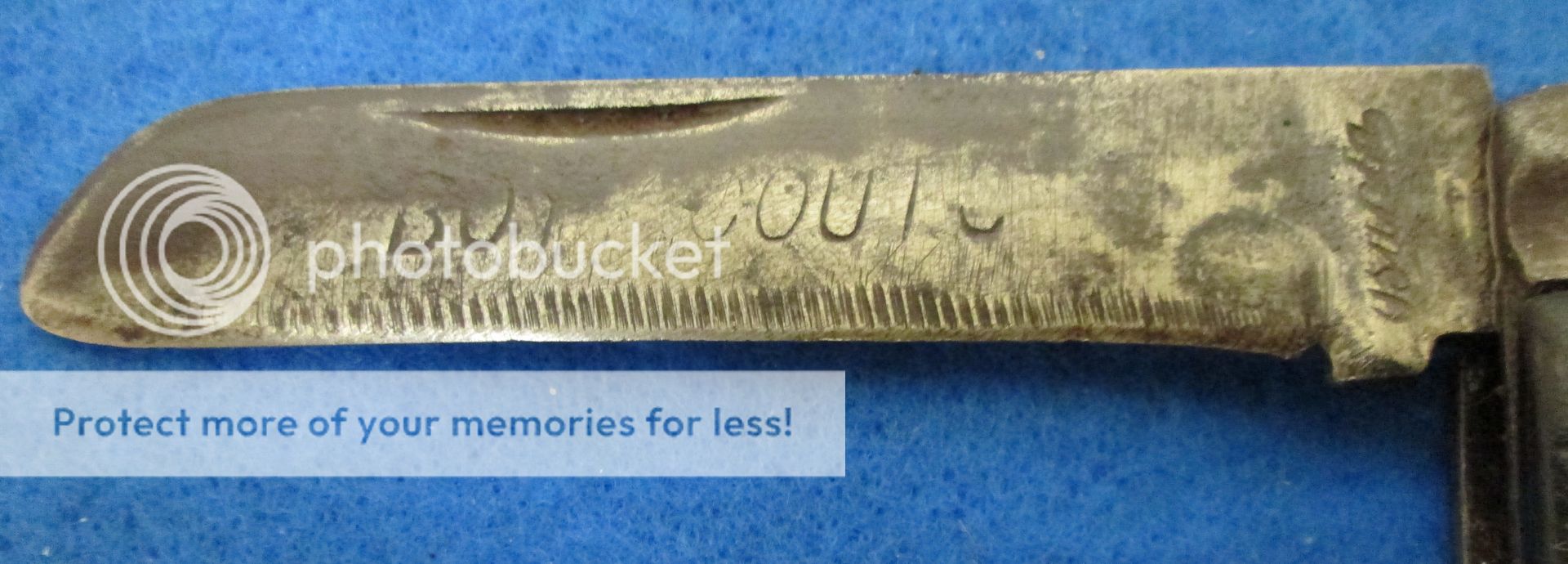


...

Ill get these two canes out of the way first. I picked them up last week. Both have engraved hallmarked silver collars and horn handles. The collar on the ebony-shafted one reads, B.S.C. - Won By - J.HIGSON -June 19th 1895. Im not sure what sort of wood has been used for the other cane, but the finish is beautiful, almost like jigged bone. The collar on this one has been engraved with a pair of initials, and the silver hallmarks date it to 1847. Something for me to wave at young whipper-snappers!






For the background to the photos above, and some of those following, Ive used some WW2 British newspapers I bought. They have some interesting headlines and content from another time.

I picked up these three knives at this years Jorvik (York) Viking Festival. The one on the left is made by a young Polish maker.

I dont have a lot of practical use for them, but I can never resist a big Sheepsfoot like this example by George Butler. Its 4 ½ not including the shackle.


Anyone who has ever worked on a construction site has probably seen something like this Sheffield-made Hacking Knife. I dont usually buy them, but thought Id get one to show here. Theyre used for everything from stripping cable and opening bags of cement to batoning pipes and bricks. They are more like a chisel than a knife, crude and ugly, but extremely robust. This one is typical of the British ones Ive seen (I saw a US one just yesterday, and it wasnt too different), ¼ thick, with leather slabs crudely fixed on for handles. Theyre a bit loose, so had been wrapped in duct tape, which is quite common.



In the days before most folks owned cameras, they bought their holiday snaps. These sets are from the 1920s.


There was a time in the early 20th century when the Boy Scout movement absolutely exploded, and nearly every boy there was wanted to be one. Of course, they all needed knives, and the Sheffield cutlers bent their backs to make them. There was no official pattern, but hundreds of thousands of Boy Scout Knives were produced. The earliest were sheath knives, but heres a folding knife, very similar in pattern to British Army Clasp Knives, with a Boy Scouts blade etch. As youd imagine, its had a hard life, and both the Sheepsfoot blade and marlin spike have play due to spring wear. Scratted buffalo horn handles, the scratting possibly done by the owner I would think. Strangely, it has no bail. I have no idea what the tang stamps says! Ive included a photo of the knife sandwiched between a British Army WW1 pattern clasp knife, and one from WW2.





...

